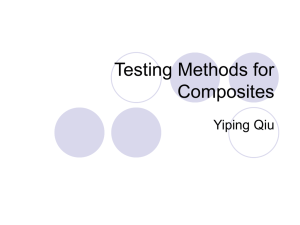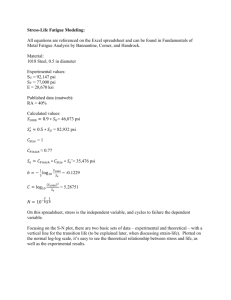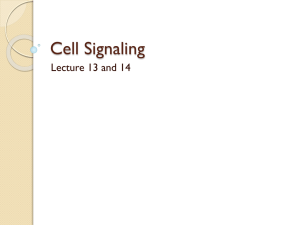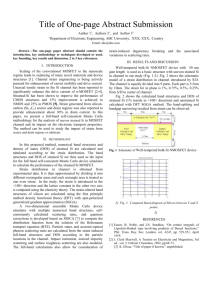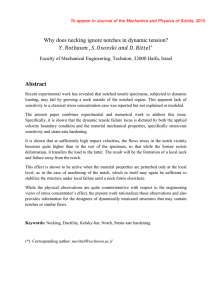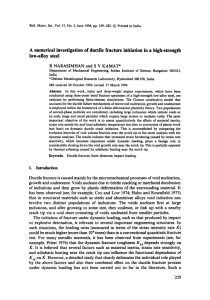Manuscript_Supplementary
advertisement
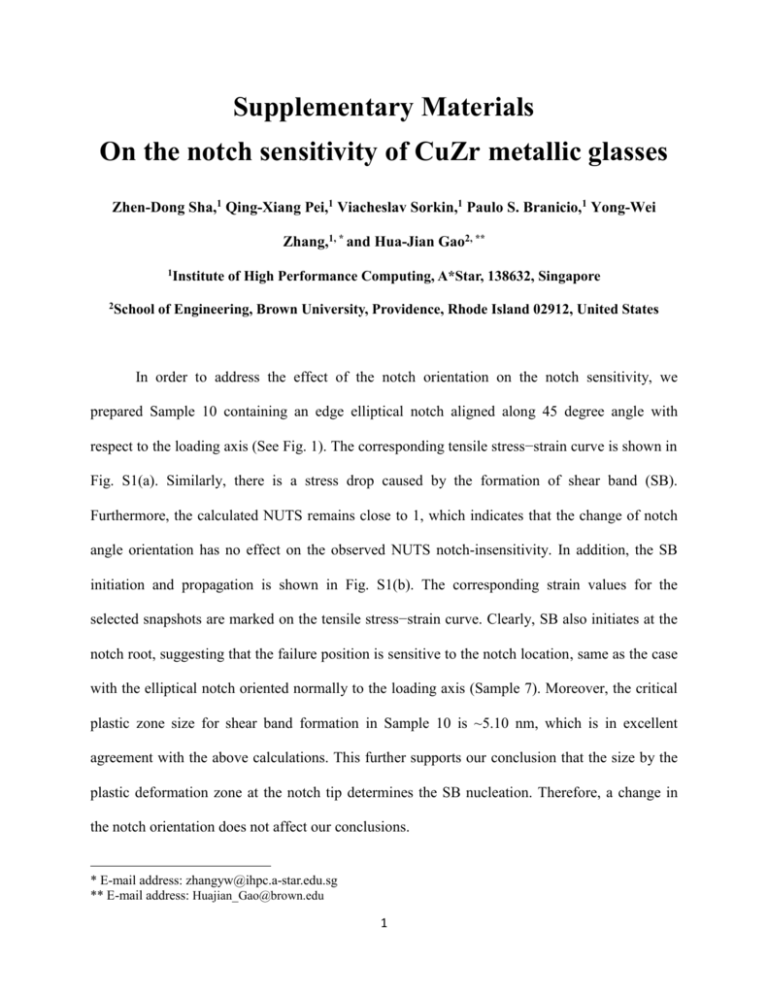
Supplementary Materials On the notch sensitivity of CuZr metallic glasses Zhen-Dong Sha,1 Qing-Xiang Pei,1 Viacheslav Sorkin,1 Paulo S. Branicio,1 Yong-Wei Zhang,1, * and Hua-Jian Gao2, ** 1 2 Institute of High Performance Computing, A*Star, 138632, Singapore School of Engineering, Brown University, Providence, Rhode Island 02912, United States In order to address the effect of the notch orientation on the notch sensitivity, we prepared Sample 10 containing an edge elliptical notch aligned along 45 degree angle with respect to the loading axis (See Fig. 1). The corresponding tensile stress−strain curve is shown in Fig. S1(a). Similarly, there is a stress drop caused by the formation of shear band (SB). Furthermore, the calculated NUTS remains close to 1, which indicates that the change of notch angle orientation has no effect on the observed NUTS notch-insensitivity. In addition, the SB initiation and propagation is shown in Fig. S1(b). The corresponding strain values for the selected snapshots are marked on the tensile stress−strain curve. Clearly, SB also initiates at the notch root, suggesting that the failure position is sensitive to the notch location, same as the case with the elliptical notch oriented normally to the loading axis (Sample 7). Moreover, the critical plastic zone size for shear band formation in Sample 10 is ~5.10 nm, which is in excellent agreement with the above calculations. This further supports our conclusion that the size by the plastic deformation zone at the notch tip determines the SB nucleation. Therefore, a change in the notch orientation does not affect our conclusions. * E-mail address: zhangyw@ihpc.a-star.edu.sg ** E-mail address: Huajian_Gao@brown.edu 1 In addition, the effect of the sample aspect ratio on notch sensitivity was investigated. We reduced the aspect ratio of Sample 3 from 2 to 0.65, while keeping all other sample dimensions unchanged (See Sample 11 in Fig. 1). The corresponding tensile stress−strain curve and the snapshots of SB initiation and propagation are shown in Fig. S2(a-b). A stress drop in the stressstrain curve is also observed. The UTS and NUTS are the same as that of Sample 3, indicating that the reduction of the aspect ratio has no effect on the notch-insensitive NUTS. Similar to the original aspect ratio case, SB starts from the notch root, which suggests that the failure position is sensitive to the notch location. Moreover, the critical plastic zone size is calculated to be ~4.62 nm, in excellent agreement with our previous calculations for the original aspect ratio. Therefore, a change in aspect ratio does not affect our conclusions. 2 Figure S1: (a) The tensile stress−strain curve for Sample 10. (b) A sequence of snapshots capturing shear band initiation and propagation. The corresponding strains in the snapshots are marked in the tensile stress−strain curve. The color indicates the atomic local shear strain. The red line outlines the area of the plastic zone right before the shear band nucleation. 3 Figure S2: (a) The tensile stress−strain curve for Sample 11. (b) A sequence of snapshots capturing shear band initiation and propagation. The corresponding strains in the snapshots are marked in the tensile stress−strain curve. The color indicates the atomic local shear strain. The red line outlines the area of the plastic zone right before the shear band nucleation. 4




